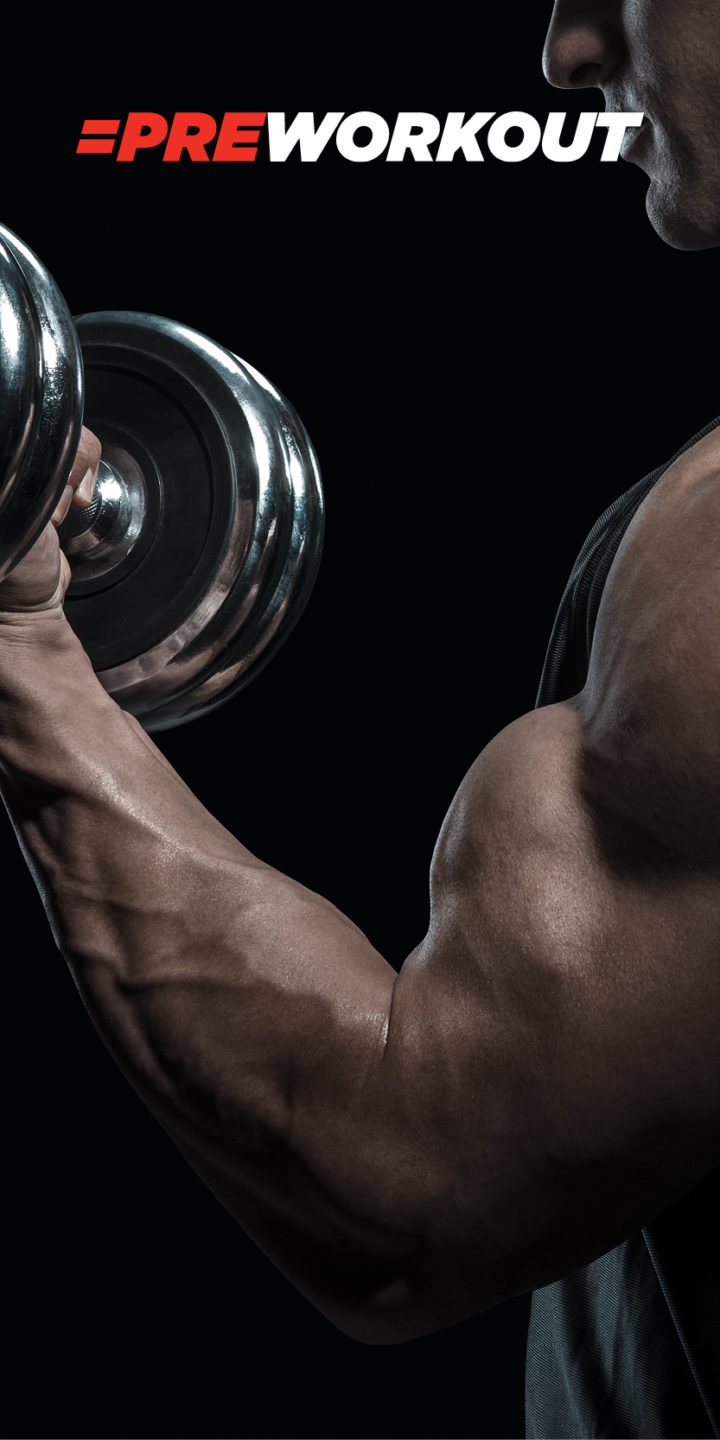What is one muscle we all want to grow? The biceps. Growing the biceps makes you look more aesthetic, helps improve compound lifts, increases strength, and makes you fill out your shirt a little more. But to grow your biceps, you must perform the right exercise, you must apply progressive overload, and you must workout with the right frequency. Once you do these things correctly, you will see your arms start growing much more rapidly and the numbers on your lifts will go up quickly as well.
In this article, we are going to cover:
- What muscles make up the biceps
- The function of the biceps
- What it means to progressively overload the biceps
- Best barbell exercises for growth
- Best dumbbell exercises for growth
- Best cable/machine exercises for growth
- Supplements to help with growth and recovery
- How to get an incredible pump
What Makes Up the Biceps
Let’s talk a little about anatomy before we get into the actual exercises so you can have an understanding of why each exercise works the way they do.
The biceps brachii, or biceps, are on the anterior side of the humerus, or upper arm.
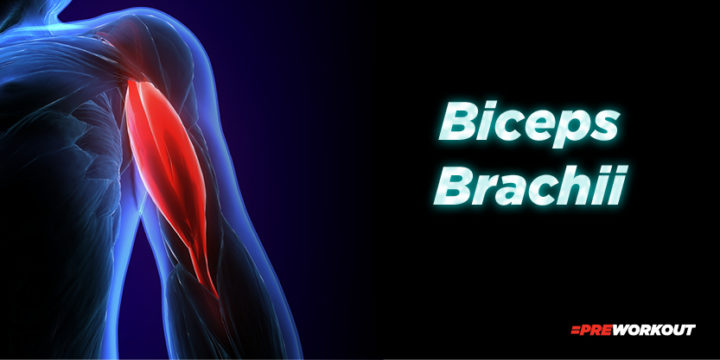
Although they work as a single unit, the biceps brachii break up into a short and a long head, depending on their origin point.
The short head is the more medial of the two, located on the inside of your upper arm.
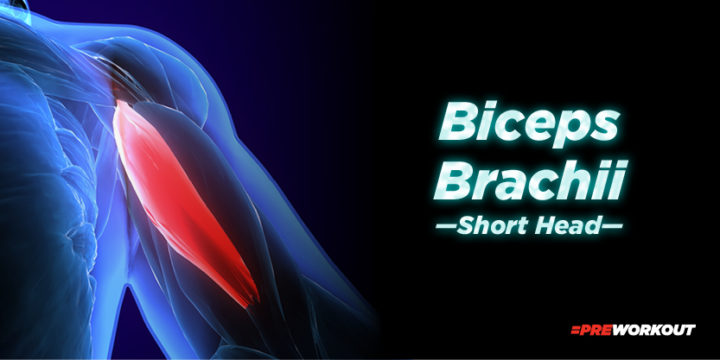
The long head sits more laterally, or more outside of the upper arm.
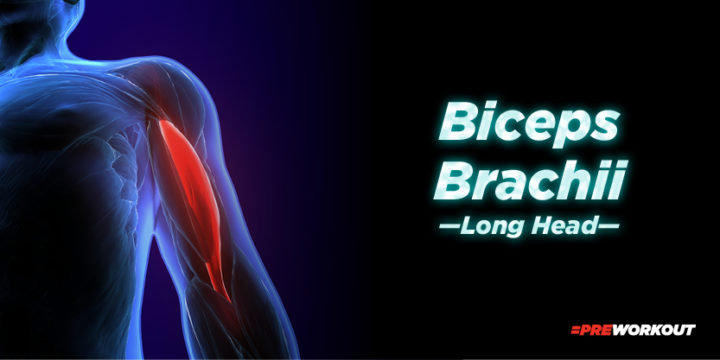
A muscle that is not the main “attraction” of the biceps (meaning it is not very visible), but sits under them and is also the main elbow flexor is the brachialis.
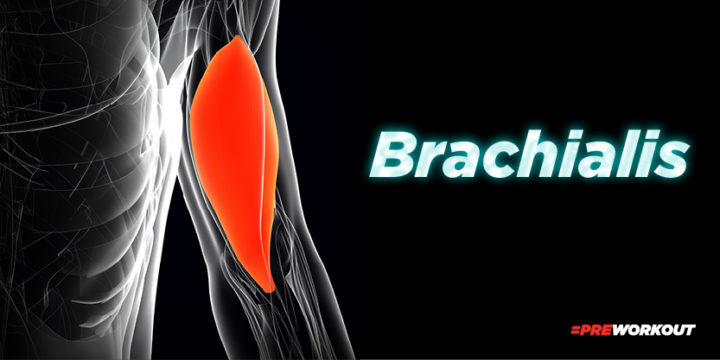
This muscle actually does over half the work when it comes to elbow flexion. “It has a large cross-sectional area, providing it with more strength than the biceps brachii and the coracobrachialis” (Henderson, 2023). Although it is not seen, increasing the size will “push up” your biceps making them appear larger. If you are looking at yourself in a mirror, this will make your bicep appear thicker or wider.
The last bicep muscle that we will talk about is more of a forearm muscle. This muscle is the brachioradialis. This is more of a forearm muscle because it crosses the elbow joint.
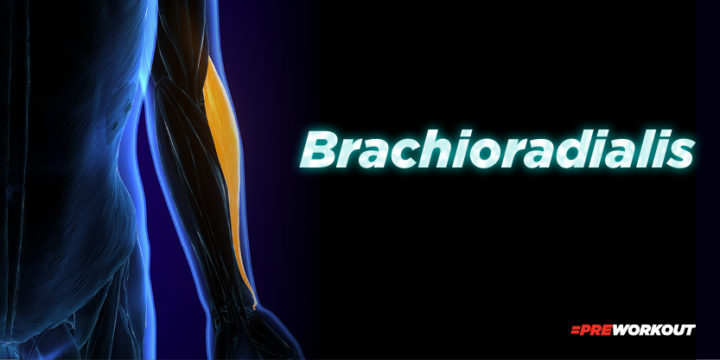
The function of the biceps
When you think of what motion the biceps help with, you probably think of elbow flexion. Did you know there are actually four movements in which they are active? Elbow flexion is the primary use of the biceps, but they are also part of “forearm/hand supination, shoulder flexion, and horizontal shoulder adduction” (Washmuth, 2022). That means every time you turn your hand outward or bring your arm above your head or across your body you will be to some extent using your bicep muscles.
How to Progressively Overload the Biceps
You progressively overload the biceps the same way you would for any other muscle. NASM states that “3 mechanisms of building muscle through strength hypertrophy are metabolic damage, muscle-tension (force), and exercise-induced muscle damage.” With respect to progressive overloading, you are attacking the muscle-tension variable.” The basis of progressive overload is always finding some way to place more demand on your muscle causing an adaption (growth or strength).
One area in particular that few people use is frequency and the biceps are a muscle that typically responds very well to more frequency. Let’s say you usually hit biceps once a week for a total of twelve sets. You are only giving your biceps a stimulus for growth one day of the week. Now let’s say you spaced that out and did four, intense sets three times a week. You are now increasing that growth stimulus to three times a week, without even changing the weight or repetitions.
There are a few different ways you can use progressive overload to train your biceps:
- Increase the weight or repetitions
- Increase the intensity
- Increase the time
- Adding in a variety of advanced training techniques (drop sets, cluster sets, supersets, etc.)
- Increase the frequency at which you train your biceps
The Best Barbell Exercises To Grow Biceps
The Barbell or EZ-Bar Curl
This exercise is at the top of the list, not only because it is simple and straightforward, but also because you are able to use the most amount of weight. The more weight you use, the more demand you put on the muscle. This is a great exercise because of the ability to scale the weight very easily. I included the EZ-Bar in here as an option if holding a straight bar hurts your wrists. To do this exercise, make sure you keep your arms slightly in front of your shoulders while keeping your shoulders back and chest up. When you are curling, do not let yourself lean forward. I would not typically recommend going too heavy with this, as this puts you at risk of injuring yourself. Sticking to an 8-20 rep range works very well.
Barbell or EZ-Bar Preacher Curls
Remember how I said there are two different heads of the bicep muscles? Well, the preacher curl is on this list not only because you are isolating your biceps more and lengthening the range of motion, but also because you are going to bias the short head a little more (the inner bicep). To do this exercise, grab the inner angled part of the EZ-Bar keeping your palms facing upward, and curl the bar while using the preacher bench. Control the weight going down and feel a stretch at the bottom. Again, I would not recommend going heavy on this one and an 8-20 rep range works very well here also.
Chin-Ups
No barbell here, instead the chin-up is a bodyweight exercise that involves more of your biceps than a traditional pull-up. Instead of grabbing the pullup bar with your palms facing away, turn your palms toward you. This is an easy way to target the biceps and use more weight than you would with a curl. This is also a tremendous back exercise. Once you advance enough, adding in some weight will take the exercise to another level. I prefer to do these heavy in the 4-8 rep range. If you like more of an endurance training aspect, you can shoot for the 12-16 range.
Overhand EZ-Bar Curls
The overhand EZ-Bar curl uses an overhand or pronated grip. This exercise is best for hitting the forearm brachioradialis and brachialis muscles. This will not only help with forearm and bicep size but also grip strength. These typically produce the best results when done in the higher rep ranges of 12-20. To do this exercise, grab the innermost angled part of the EZ-Bar where your palms are facing down and curl using your forearm and biceps. The same principles apply: chest up, shoulders back, and don’t let yourself fall forward.
The Best Dumbbell Exercises For Bicep Growth
Incline Dumbbell Curls
Find an incline bench and set it to about 60 degrees. You don’t want to be laying too far back. Grab a pair of dumbbells. I would go lighter than normal, and let your arms hang by your sides. A cue I like to give myself is to try to flex my triceps at the bottom to feel an extra stretch and then curl the weight up. This utilizes the “stretch reflex.” Jeff Cavalier C.S.C.S says “it’s a protective mechanism that our muscles have that allows us to get a better strength of contraction when a muscle is momentarily stretched to its limits.” The lighter rep range usually works best with this movement.
Hammer Curls
This exercise is awesome for hitting the brachialis and brachioradialis muscles. Not only will these give your biceps a more “dense” look but will help in building your forearms as well. Grab a pair of dumbbells and hold them in a neutral grip while you curl. You can do these on the heavier side, so I would suggest the 6-12 rep range.
Dumbbell Curls
Perform these the same as with a barbell, except you are using dumbbells. This will evenly target both heads of the bicep and is a great overall bicep builder. Perform them alternating or at the same time. I like to use the 8-20 rep range with these.
The Best Cable and Machine Exercises
Cable Curls
Grab the bar attachment and attach it to the cable machine at the lowest the cables will go. Perform these the same as you would a barbell curl except you are using a cable. Cable curls are great as they add more consistent force throughout the whole range of motion. Doing this exercise in the 8-20 rep range works very well.
Cable Hammer Curls
Grab a rope attachment like you would do triceps pushdowns with and attach it to the machine. Keeping a neutral grip, curl the rope like you would with a dumbbell hammer curl. These are also going to keep more consistent tension on the muscles worked throughout the whole range of motion. You can do these in the heavier rep range.
Cable Overhand Curls
To hit the forearm and brachialis muscles, attach a bar to a cable as you would with a normal curl, except turn your hands over when you curl. I like doing these in the higher rep ranges as this helps with forearm endurance (which translates to other exercises in your routine).
Facing-Away Cable Curls
Attach two handles to the cable machine and put it at its lowest setting. Step forward a half step so that your arms are behind you a bit. Then simply curl while leaning forward a little. Don’t let your arms or upper body move too much to keep as much tension on your biceps as possible. For an added bonus, squeeze for a second or two at the top.
The Best Supplements for Bicep Growth and Recovery
Now that we have gone over the exercises that are best for building your biceps, let’s go over some supplements that will help speed that process up and also help you recover quicker.
Creatine
Creatine is the number one supplement for speeding up muscle growth and strength. Creatine helps your muscles store more energy in the form of phosphocreatine. The more saturated your stores are, the faster your body can recycle ATP, which helps between set recovery. Creatine also helps directly with power and performance. Once you have reached full saturation of creatine stores, you should be able to get out a few more reps than normal with the same weight.
The two main forms of creatine I would look for are creatine monohydrate and creatine hydrochloride. For the monohydrate, you need to take 20 grams per day for the first week and then 5 grams per day after that. Hydrochloride can be useful if monohydrate gives you some stomach upset or causes you to feel bloated. Hydrochloride also offers less water retention. As for those who still believe that creatine causes kidney or liver damage, when taken at the proper doses and in the absence of any pre-existing conditions, “there is no evidence to support any significantly detrimental side effects in people who consume high doses of 30 grams per day for 5 years” (Meacham, 2022). That is six times the needed dose.
Essential Amino Acids (EAA’s)
Shoot for an EAA supplement that offers 5-10 grams per scoop and sip on them throughout your workout. EAA’s are better than BCAA’s as you can actually synthesize new protein with EAA’s (build muscle). These directly help with recovery and muscle soreness.
Whey Protein
If you aren’t getting enough protein in your diet, then you physically can’t build muscle. Whey protein shakes are a fast, convenient, and tasty option if you are not able to get all your protein through food. You can also bake and cook with these too, so you don’t have to only drink them. If you are lactose intolerant or prefer to avoid dairy, there are awesome animal-based and vegan protein options as well.
Omega 3’s
The American diet is significantly lackluster in the intake of Omega 3 fatty acids. When supplemented, these can help improve joint health, heart health, eye and brain health, hormone health, and cholesterol. Omega 3s can also reduce systemic inflammation, and even lower blood pressure.
How to Get an Incredible Pump
We all go after a pump when we are hitting the biceps. Here are five ways you can increase your pump.
Sleep
You have got to be sleeping well. If you aren’t, this is hindering you from not only getting a good pump, but also decreasing your performance, recovery, and ability to grow muscle. You should be shooting for 7-9 hours of quality restful sleep. If you are younger, you may even need 9-11 hours for optimal growth.
Hydration
Your muscles are mostly made of water. If you are not well hydrated then your muscles will physically not be able to get as good of a pump. To ensure hydration, drink 20-30oz of water at least an hour before training.
Nutrition
If you are not fueling your body properly you not only won’t get a good pump but you also won’t maximize muscle growth and recovery. Carbs should be a staple in your diet if maximizing muscle growth is the goal. If your muscles aren’t full of glycogen (the form in which you store carbs), then they will appear almost deflated. Try to have 30-40 grams of slow-digesting carbs about 2-3 hours before training.
Sodium
Adding ¼ teaspoon of sodium, or salt, to your pre-workout supplement (if it isn’t already in there) or meal will help with pumps tremendously. Sodium plays an important role in moving water into muscle cells while working out, plus its hydrating abilities help with strength.
Pre-Workout
Adding a pre-workout or a non-stimulant (no caffeine) supplement before your workout can help tremendously with a pump. You don’t want too much caffeine though, as that will start to restrict your blood vessels reducing the pump. Find a product that has a high dose of citrulline, agmatine sulfate, nitrosigine, or nitrites (beetroot powder, arugula extract, etc.)
Frequently Asked Questions
What is the best exercise for increasing bicep size?
The best exercise for increasing bicep size is the barbell or EZ-Bar curl. This exercise puts a lot of isolation on the biceps while being able to add more weight which increases muscle tension.
What is the best exercise for increasing bicep width?
Any variation of the hammer curl that targets the brachialis and brachioradialis is what is going to give you the most width.
What is the best bicep exercise for men and women?
Men and women can use the same exercises as the anatomy is the same. The barbell or EZ-Bar curl is the best for putting on size.
Do cables work as well as dumbbells and barbells for growth and strength?
Yes. You can build biceps just as big with cables as you can with dumbbells and barbells.
References
- Henderson, Eric, et al. Physiopedia, 2022, https://www.physio-pedia.com/Brachialis#cite_ref-:2_5-0.
- Biceps Brachii: Anatomy, Function & Location. (n.d.). Retrieved February 23, 2023, from https://study.com/learn/lesson/biceps-brachii-muscle-anatomy-function-location.html
- Adams, Andre. “Progressive Overload Explained: Grow Muscle & Strength Today.” Blog.nasm.org, blog.nasm.org/progressive-overload-explained.
- Ellis, Phillip. “11 “Stretch Reflex” Exercises to Help You Build Muscle Faster.” Men’s Health, 16 June 2020, http://www.menshealth.com/fitness/a32879442/stretch-reflex-exercises-athlean-x-video/.
- Mawer, Rudy. “Is Creatine Safe, and Does It Have Side Effects?” Healthline, 2019, http://www.healthline.com/nutrition/creatine-safety-and-side-effects.
Author Bio
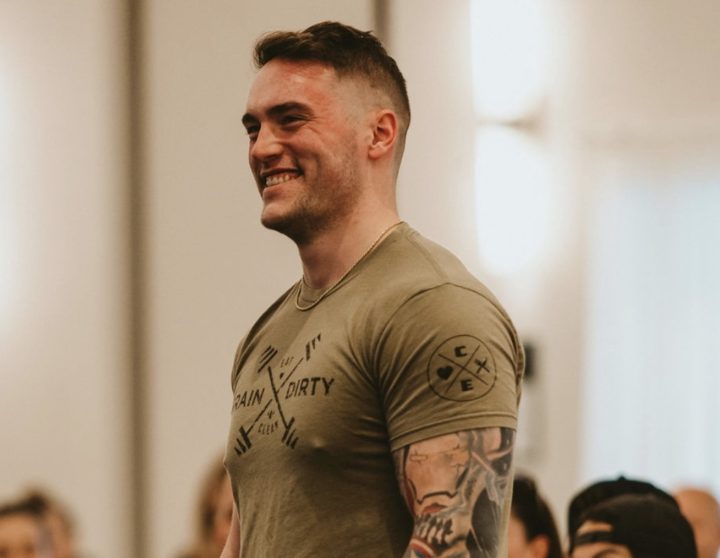
Sam Lipscomb has been an avid health and fitness enthusiast for over 6 years now. He is a Certified Personal Trainer and Nutritionist who has spent years learning about health, nutrition, fitness, the human body, and supplements in order to better help the individuals he interacts with.
His goal has been to learn everything he can to help others achieve their fitness goals and get accurate fitness information.
